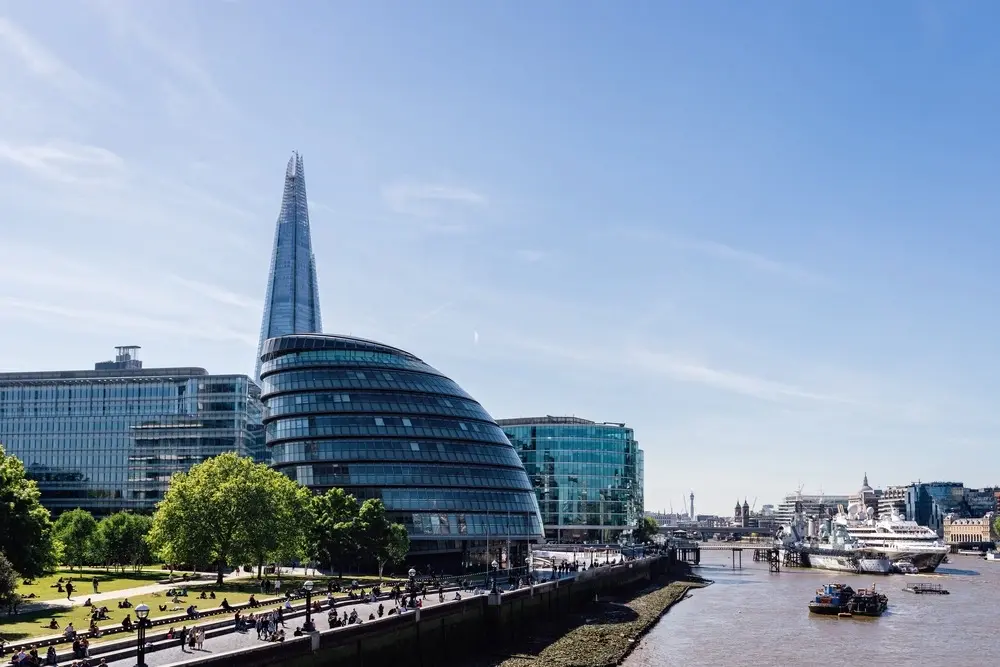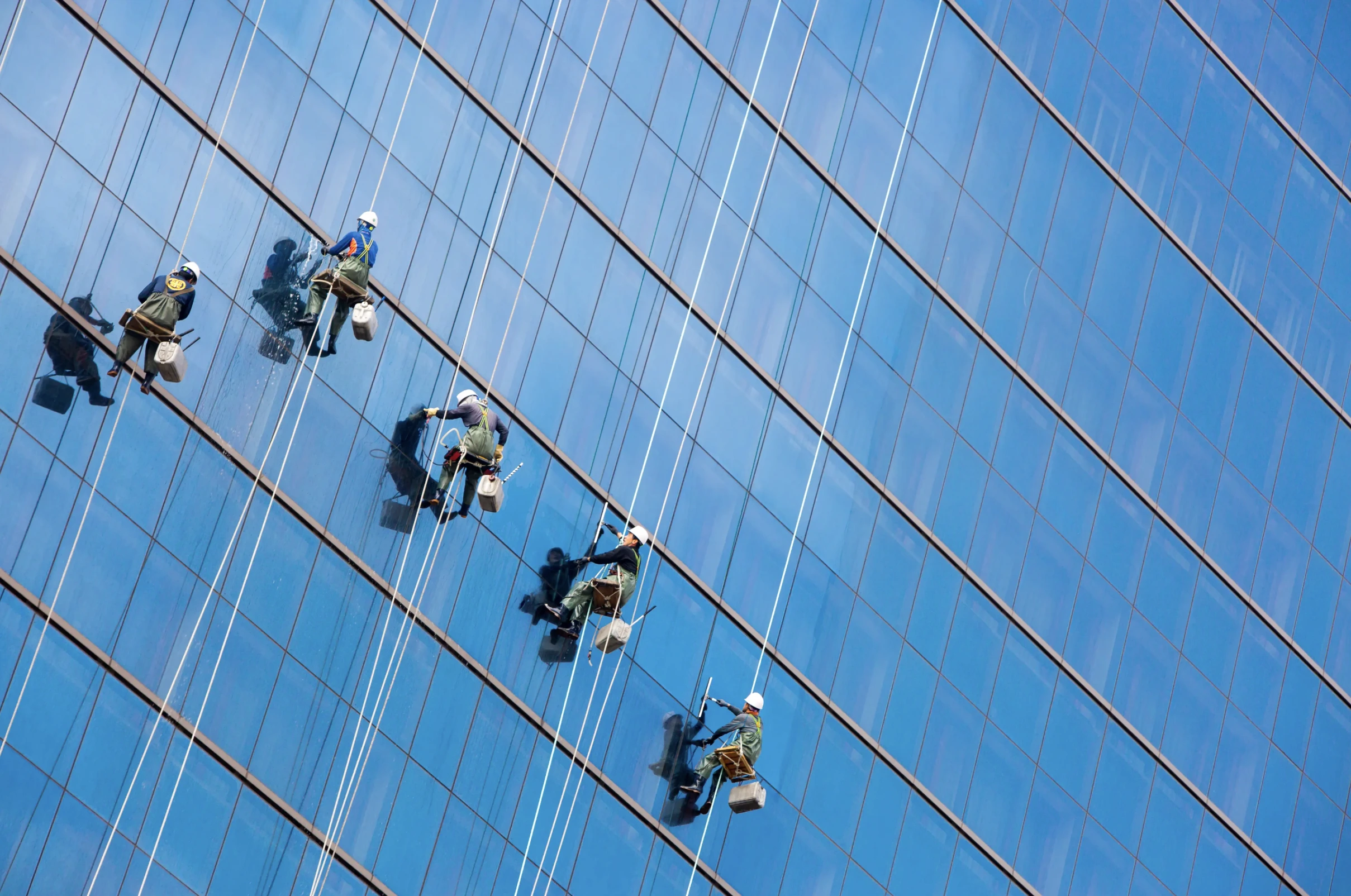
Rope Access vs MEWP vs Cradle: Choosing the High-Rise Access
Explore the best high-rise access strategy for London buildings. Compare rope access, MEWP and cradle systems, with insights on safety from Classic London.

Maintaining the exterior of London’s high-rise buildings is no small task. Every square metre of glass, stone, and metal reflects the image of its tenants and owners. For property managers and facilities directors responsible for premium commercial estates, the choice of high-rise access strategy determines not only cleaning results but also safety compliance, tenant experience, and overall operational efficiency.
This guide explores three main access methods - rope access, MEWP (mobile elevated work platforms) and cradle systems - through the lens of London’s complex urban environment. It will help decision-makers identify the most efficient, compliant and brand-aligned approach for their buildings.
High-Rise Access in London Property Maintenance
London’s skyline presents a unique set of challenges for external maintenance. Tight streets, conservation areas, high pedestrian density, and multiple local authority regulations make access planning as strategic as any financial decision.
Under CDM 2015 and the Work at Height Regulations, every building owner or managing agent has a duty to plan work safely and efficiently. For high-end properties in districts such as Mayfair, the City, Canary Wharf or Fitzrovia, this goes beyond compliance: clean façades and well-maintained exteriors directly influence tenant retention, rental yield and corporate brand perception.
Choosing the correct access strategy can reduce downtime, prevent unsightly staining or surface damage, and demonstrate environmental and operational responsibility to stakeholders.
Rope Access Services for London Towers
Rope access - also known as industrial abseiling - has become the most agile solution for complex façades. Operatives descend from roof anchors using twin-rope systems that meet IRATA standards. Because setup requires minimal ground space, rope access is perfectly suited to London’s narrow pavements and high-traffic business districts.
In practice, rope access allows Classic London’s teams to clean and inspect façades of any geometry, from curved glass atriums to recessed stonework. Work can take place overnight or in early hours, ensuring minimal disturbance to office tenants or retail units below.
The technique’s lightweight nature means there is virtually no carbon output beyond transportation. For clients aligning with ESG objectives, rope access offers the lowest environmental impact of any access method.
However, rope access depends on safe weather conditions and existing roof-anchor certification. It is best for cleaning, inspection and light restoration tasks rather than heavy material replacement.
MEWP Access Solutions for Commercial Façades
Where ground space allows, MEWPs (Mobile Elevated Work Platforms) provide a stable, powered platform for cleaning and maintenance. They are ideal for façades up to about 40 metres high, particularly where heavier tools or replacement works are required.
For premium estates with plazas or service yards - such as in Paddington Basin or Docklands - MEWPs offer the flexibility to complete works quickly without installing roof anchors. Modern electric or hybrid models eliminate emissions and noise, allowing overnight or weekend operations near residential zones.
MEWP access does, however, demand careful coordination with borough authorities. Temporary pavement or lane closures in Westminster or the City require advance licensing and clear traffic-management planning. Classic London’s operations team handles these permits on behalf of clients, ensuring full legal compliance while maintaining project timelines.
Because MEWPs carry higher mobilisation costs than rope access, they are most efficient for planned maintenance cycles or multi-elevation cleaning where the platform can remain on site for consecutive days.
Cradle Systems for Premium Building Maintenance
For the capital’s most prestigious high-rises, permanent Building Maintenance Units (BMUs) - or cradle systems - represent the long-term solution. Installed during construction or retrofit, these motorised cradles traverse rails along the roof or façade, providing predictable, repeatable access throughout the year.
Cradle systems allow both cleaning and minor repairs while carrying heavier tools and materials than rope access. Once commissioned, they offer the lowest per-use cost and almost zero disruption to street-level activity.
Classic London routinely services and operates BMU systems for landmark buildings, ensuring certification, mechanical inspection, and operator training remain up to date. The investment pays dividends through seamless integration into a building’s maintenance calendar - an essential factor for Grade A office towers and mixed-use developments.
Comparing Rope Access, MEWP and Cradle Systems for London Buildings
Evaluation Factor | Rope Access | MEWP | Cradle System |
Setup Time | Minimal (hours) | Moderate (permit-dependent) | Permanent |
Ground Space Needed | Very low | High | Very low |
Operational Height | 10 – 150 m | up to 40 m | 30 – 300 m |
Typical Use | Cleaning / Inspection | Cleaning + Repairs | Regular Scheduled Maintenance |
Noise & Disruption | Very low | Moderate | Very low |
Environmental Impact | Minimal | Medium → Low (electric) | Low |
Indicative Cost Profile | ££ | £££ | £££ (setup) → £ (run) |
How to Select the Best High-Rise Access Strategy for Your London Property
Image suggestion: Facilities manager reviewing façade drawings with Classic London supervisor on roof terrace.
When Classic London designs an access plan, it begins with a holistic review rather than a single method. Five key considerations shape the decision:
Building Design and Height Irregular façades or recessed glazing usually favour rope access; uniform towers may justify cradle installation.
Location and Permissions Central zones like Bank or Holborn have strict road-closure rules, often making rope access faster to mobilise.
Tenant Operations and Brand Experience For flagship offices or luxury retail, invisible overnight cleaning protects image and customer flow.
Sustainability Targets Electric MEWPs and biodegradable detergents support clients’ ESG reporting; rope access delivers near-zero emissions.
Maintenance Frequency and Budget Cradle systems reward regular use, whereas one-off cleans suit rope or MEWP deployment.
Classic London’s integrated service allows blended solutions - for example, rope access on upper levels combined with MEWPs for podium glass, ensuring both efficiency and continuity of presentation.

London Regulations and Safety Compliance in High-Rise Access
Every access strategy must align with London’s local frameworks:
City of London Corporation: highway occupation licences for MEWP operations.
Westminster City Council: restricted daytime access in retail and tourism corridors.
Canary Wharf Estate Management: coordination with estate operations for equipment movements.
Classic London manages this process end-to-end, including method statements, risk assessments, CDM documentation, and insurance verification. Each operative holds IRATA, IPAF, and SSIP-approved safety training, ensuring compliance before a single anchor or boom is deployed.
For clients, this removes administrative friction and guarantees traceable safety governance across every project.
ESG and Sustainability in High-Rise Façade Maintenance
Modern asset owners demand measurable sustainability. Classic London integrates low-impact solutions throughout its access planning:
Electric MEWPs powered by renewable energy where feasible
Water-recycling systems to reduce consumption by up to 60 %
Biodegradable detergents compliant with environmental standards
Rope access methods eliminating fuel use entirely
These initiatives not only reduce carbon footprint but also contribute to corporate ESG reporting, improving a building’s green credentials and long-term market appeal.
Partnering with Classic London for High-Rise Access and Maintenance
Classic London offers a full-spectrum service - window cleaning, façade restoration, landscaping, and MEWP hire - supported by robust compliance systems. By uniting planning, permits, operations and post-clean reporting, the company ensures clients receive one accountable partner for every aspect of exterior maintenance.
For facilities directors managing portfolios of high-profile properties, this integrated approach means fewer contractors, consistent standards, and predictable scheduling across multiple sites.
Summary Table: Selecting the Optimum Access Solution
Objective / Scenario | Recommended Method |
Tight urban locations | Rope Access |
Open plaza or campus buildings ≤ 40 m | MEWP |
Tall towers with frequent cleans | Cradle System |
Night operations or occupied offices | Rope Access / Cradle |
ESG-focused clients | Rope Access / Electric MEWP |
A high-rise access strategy should never be chosen in isolation. It must reflect building design, tenant expectations, and London’s regulatory landscape. By analysing these factors and partnering with a specialist provider, property managers can achieve safe, efficient and visibly superior results all year round





